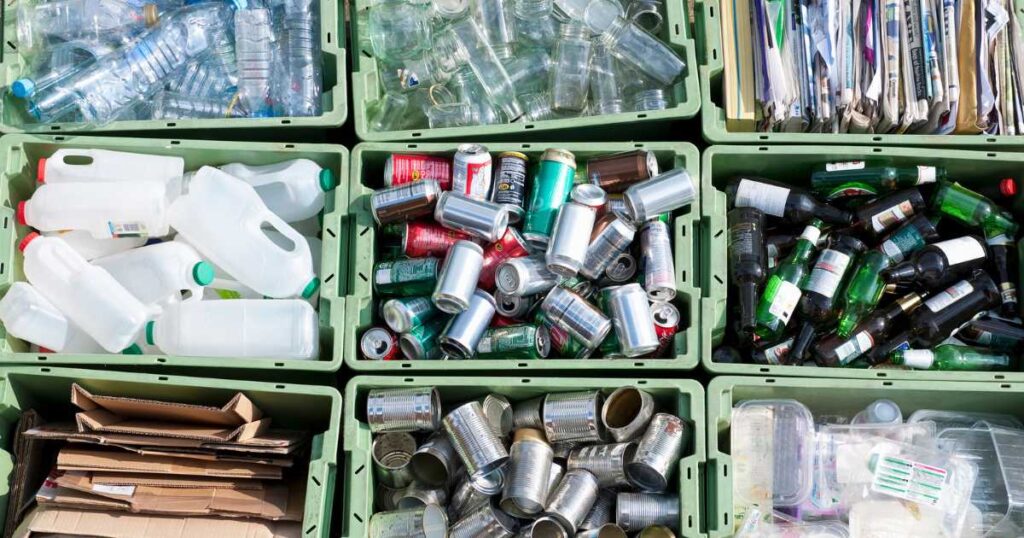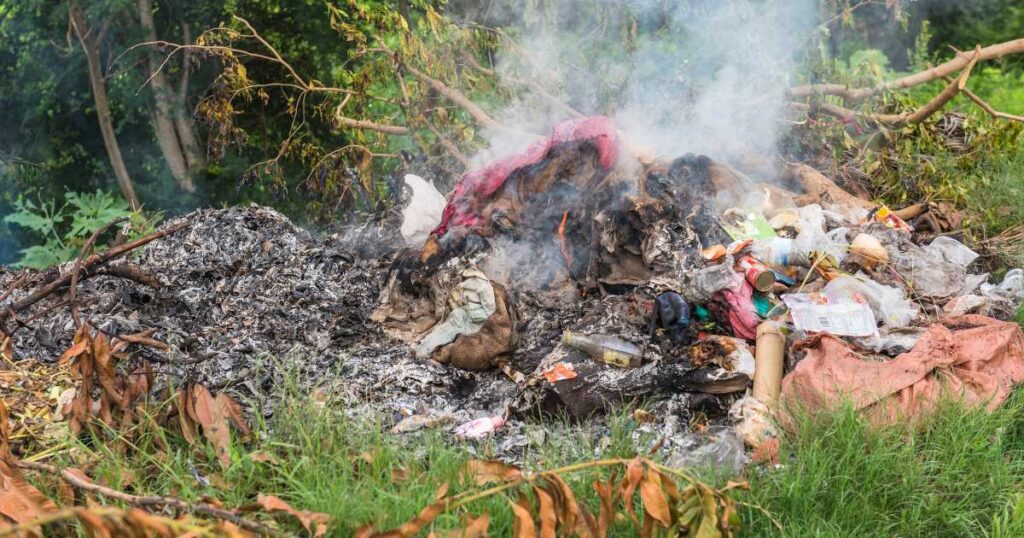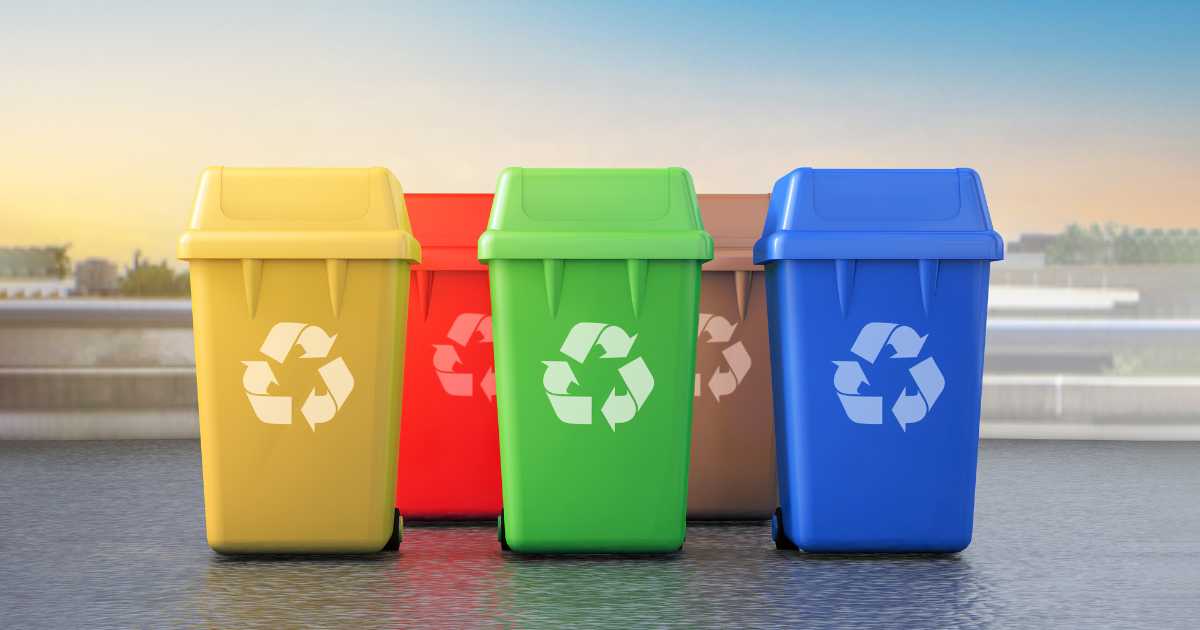Effective waste management plays a crucial role in keeping our environment clean and healthy. Being mindful of how we produce and dispose of waste is essential for making environmentally friendly choices that benefit our planet.
Waste management involves several steps, including storage, transportation, and recycling, all governed by laws and regulations to ensure proper disposal. When we stay informed, act responsibly, and collaborate, we can ensure waste is managed efficiently and our planet remains a safe, clean place for everyone.
In this blog, we’ll dive deep into the four main types of waste management and explore how they work to reduce environmental impact.
Types of Waste Management
Here are some of the most widely used methods for managing waste:
- Recycling
- Incineration
- Landfill
- Biological Reprocessing
Animal Feed
Stay tuned as we break down each method and discuss how they contribute to a cleaner, greener future!
Recycling
Recycling transforms waste into valuable resources, reducing the strain on natural ecosystems and promoting a circular economy. By reprocessing materials like paper, plastic, glass, and metal, recycling not only conserves resources but also minimizes energy consumption and greenhouse gas emissions compared to producing items from raw materials.
Various communities have improved recycling accessibility by labeling bins and materials, simplifying the process for people to recognize what can be recycled. Industries also contribute significantly by developing innovative methods to recycle complex items like electronics and textiles, helping reduce the number of products that end up in landfills.
The impact of recycling extends beyond environmental benefits. It saves governments significant funds on waste disposal programs, creates jobs in the recycling industry, and generates revenue from the sale of recycled materials. For example, aluminum recycling uses 95% less energy than producing aluminum from raw ore, highlighting its economic and ecological advantages.
Learn more about how to optimize recycling processes to enhance efficiency.

Landfill
Landfills certainly have their downsides. They can release harmful gases, pollute the soil and water, and take up a lot of space — something that’s becoming harder to find in crowded cities. To solve these issues, communities are teaming up with local authorities to create better landfill practices. This includes improving waste sorting and using more eco-friendly materials to reduce the long-term harm to the environment.
Modern landfills incorporate advanced technologies such as gas capture systems to collect and convert methane—a potent greenhouse gas—into energy. Many landfills now serve dual purposes, acting as waste disposal sites and sources of renewable energy.
However, landfills come with challenges. They can release harmful gases, contribute to soil and water pollution, and require significant land space, which is increasingly scarce in urban areas. To address these issues, communities work with authorities to develop sustainable landfill practices, including enhanced waste segregation and the use of eco-friendly materials to reduce long-term environmental risks.
Despite their drawbacks, landfills remain an essential part of waste management. With proper planning and collaboration, towns are finding ways to balance environmental protection and economic development.
For projects involving large waste, consider dumpster rentals for construction to manage debris efficiently.
Incineration
Incineration, also known as thermal treatment, involves burning waste materials at high temperatures to reduce their volume and recover energy. It is especially valuable in densely populated regions with limited space for landfills.This method can process a wide variety of waste types, including hazardous materials, making it an effective solution for medical and industrial waste disposal.
The energy produced during incineration is often harnessed to generate electricity, steam, or heat, creating an additional benefit for nearby communities. For example, waste-to-energy plants in Europe power thousands of homes while reducing landfill dependence. However, incineration poses challenges, particularly air pollution from the release of dioxins and other harmful emissions.
To mitigate this, modern facilities are equipped with advanced filtration systems and adhere to strict environmental standards to minimize their ecological footprint. While not a standalone solution, incineration remains a crucial part of integrated waste management strategies, particularly when paired with recycling and composting initiatives.
Explore the role of waste-to-energy methods in integrated waste management.

Animal Feed
Food waste is a pressing issue, with an estimated $161 billion worth of food discarded annually in the United States alone. A significant portion of this waste can be repurposed as animal feed, providing a sustainable solution that benefits both agriculture and the environment.
Surplus food, such as leftover produce, bakery items, and dairy products, can be safely processed into nutritious feed for livestock. This practice not only reduces the volume of organic waste sent to landfills but also lowers greenhouse gas emissions from decomposing food.
By diverting food waste to animal feed programs, farms save on feed costs, and municipalities reduce waste disposal expenses. Programs like these have gained traction globally, with countries such as Japan and South Korea implementing strict guidelines for converting food waste into feed.
Biological Reprocessing
Biological reprocessing utilizes natural processes to transform organic waste, such as food scraps, yard waste, and paper products, into valuable by-products like compost and biogas. This eco-friendly method reduces the environmental impact of organic waste while creating resources that benefit agriculture and energy sectors.
Composting, a widely practiced form of biological reprocessing, involves the controlled decomposition of organic material into nutrient-rich soil amendments. This process is ideal for garden waste, food scraps, and biodegradable packaging, enriching soil quality and reducing the need for chemical fertilizers.
Biogas production is another innovative method, using anaerobic digestion to break down organic waste in the absence of oxygen. The resulting biogas—composed mainly of methane—can be used to generate electricity, heat, or fuel, offering a renewable energy source that reduces reliance on fossil fuels.
Industrial applications of biological reprocessing are also expanding, with factories integrating systems to process organic waste and reduce landfill dependency. This approach aligns with sustainable development goals by promoting waste reduction and energy recovery.
Frequently Asked Questions
What happens if waste is not managed properly?
Improper waste management wreaks havoc on our planet. It leads to ocean pollution, clogged drains causing floods, the spread of diseases, harm to wildlife, and even stunts economic growth. Managing waste responsibly is crucial to avoiding these devastating effects.
What is the best solution for waste management?
Here are some simple yet impactful steps to manage waste better:
- Carry a reusable bottle or cup for beverages on the go.
- Use reusable grocery bags not just for groceries but for all shopping needs.
- Recycle and compost as much as possible.
- Avoid single-use items like disposable containers and utensils.
- Buy secondhand products and donate items you no longer need.
- Small changes like these can make a big difference for our planet.
What are the benefits of waste management?
Waste management is a game-changer for the environment. Recycling and reusing materials reduce the need for resource extraction, decrease pollution, and lower the risk of environmental contamination. Every bit of waste we manage responsibly contributes to a healthier planet.
How is waste management measured?
Municipal Solid Waste (MSW) is used as a benchmark. The total MSW produced annually includes:
- The amount recycled.
- The amount recovered.
- The amount disposed of.
On-site practices like backyard composting or grass cycling are often excluded from these calculations, focusing instead on broader waste management efforts.
What is the prime goal of waste management?
The primary goal of waste management from a climate perspective is to reduce greenhouse gas emissions, particularly methane released from landfills. By prioritizing sustainable waste policies, we can significantly lower our carbon footprint and protect the environment.
How can waste be recovered?
Recovering waste is all about giving items a second life! Here are a few ideas:
- Donate unwanted toys and books to schools or hospitals.
- Place used clothes in clothing donation bins.
- Reuse plastic containers for storing or freezing food.
- Save wrapping paper and boxes to use again.
- Repurpose old jars for storage.
- Drop off magazines at your local doctor’s or dentist’s office for others to enjoy.
Why is waste segregation important?
Waste segregation is vital because it ensures that different types of waste are properly handled. Organic waste can be composted, recyclables can be processed, and hazardous waste can be disposed of safely. This minimizes environmental damage and maximizes resource recovery.
What role does technology play in waste management?
Technology has revolutionized waste management through innovations like smart waste bins, automated sorting systems, and waste-to-energy facilities. These advancements make waste collection, processing, and recycling more efficient, reducing the overall environmental impact.
What is zero waste, and how can it be achieved?
Zero waste is a philosophy that aims to eliminate waste by rethinking how products are designed, used, and disposed of. Achieving it involves reducing consumption, reusing materials, recycling effectively, and supporting sustainable production practices. Communities worldwide are adopting zero-waste policies to promote a circular economy.
What are the environmental impacts of hazardous waste?
Improper disposal of hazardous waste can contaminate soil, air, and water, harming ecosystems and human health. Toxic substances like chemicals, batteries, and e-waste require specialized handling to prevent long-term damage to the environment.
